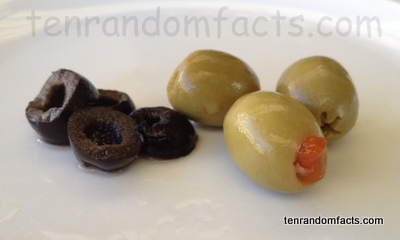“Whoever loves pleasure will become poor; whoever loves wine and olive oil will never be rich.” Proverbs 21:17 (NIV Bible)
- Olives are fruit found on the tree Olea europaea and are from the family Oleaceae, a family of flowering plants, and they range from 1 to 2.5 centimetres (0.4 to 1 inches) in length.
- Olives are native to Asia, Africa and the Mediterranean and were first cultivated significantly in the Middle East, and later the Mediterranean.
- The word ‘olive’ originates from the Latin word ‘ŏlīva’, which is derived from the Greek ‘elaía’ and ‘elaíon’, and the fruit is a renowned symbol of wisdom, victory, fertility, peace, power and purity.
- The colder months of autumn and winter, is the time that olives are typically harvested, and they are eaten at their various stages of ripening, and start as a green colour, and then turn brown, purple then black, although, sometimes black coloured olives are produced by chemicals.
- Olives, when fresh, are notably bitter, and the bitterness is generally removed via various curing or fermentation processes.
- Spain was the main olive producer in the world in 2011, growing 7,094,000 tonnes (7,820,000 tons) of the world production of 18,003,000 tonnes (19,845,000 tons), and only 5% of the world’s production is grown outside of the Mediterranean region.
- Olives can be eaten uncooked or cooked usually in savoury dishes and often in Italian cuisine, notably with cheese, breads, pizza, pasta, fish and meat.
- Olives are usually very high in sodium, due to the curing process, and are a good source of vitamin E.
- Commercially, 0lives can be obtained in their natural state, pickled, spiced, stuffed, or pitted, and are often stuffed with pimento (sweet peppers).
- Of all olives harvested, a massive 90% are used to make oil, and the oil is used extensively in cooking.
Bibliography:
Olive, 2014, Wikipedia, http://en.wikipedia.org/wiki/Olive
Olives: The Noble Fruit’s Place in History and at the Table, 2014, Dellalo, http://www.delallo.com/articles/olives-noble-fruits-place-history-and-table






